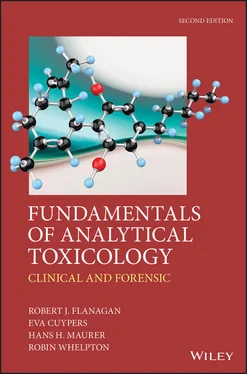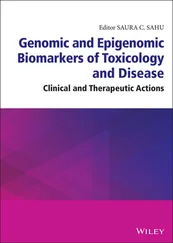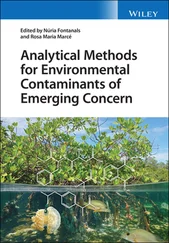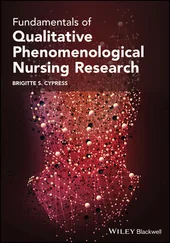Section A The Basics
1 Analytical Toxicology: Overview
1.1 Introduction
Analytical toxicology is concerned with the detection, identification, and measurement of drugs and other foreign compounds (xenobiotics) and their metabolites, and in some cases endogenous compounds, in biological and related specimens. The analytical toxicologist can play a useful role in the diagnosis, management, and indeed the prevention of poisoning, but to do so a basic knowledge of clinical and forensic toxicology is essential. Moreover, the analyst must be able to communicate effectively with clinicians, pathologists, coroners, police, members of the legal profession, and a range of other people. In addition, a good understanding of analytical chemistry, clinical chemistry, pathology, clinical pharmacology, pharmacokinetics, and occupational and environmental health is essential.
The use of physicochemical techniques in the detection, identification and measurement of drugs and other poisons in body fluids and tissues has its origins in the development of forensic toxicology. Important contributions came later from work to improve food safety and from occupational toxicology. Major advances in analytical methodology followed the introduction and application of refined physicochemical techniques such as spectrophotometry and chromatography in the late 1940s. In particular, ultraviolet (UV) and infra-red (IR) spectrophotometry, together with visible spectrophotometry (colorimetry), and paper and ion-exchange column chromatography were widely used. In the 1960s paper chromatography was largely superseded by thin-layer chromatography (TLC) as this latter technique offered advantages of speed of analysis and lower detection limits.
Improved instrumentation for UV/visible spectrophotometry (UV/Vis), spectrophotofluorimetry, atomic absorption spectrophotometry (AAS), electrochemistry, X-ray diffraction, nuclear magnetic resonance (NMR), and neutron activation analysis led to these techniques being applied to particular problems. However, whilst some more traditional methods still have their uses, gas and liquid chromatography (GC and LC, respectively), often linked to mass spectrometry (MS) in its various modes, on the one hand and immuno- and enzyme-based assays on the other, are the techniques that are used most widely today ( Table 1.1).
Table 1.1 Methods for the analysis of drugs and other organic poisons in biological samples
| Principle |
Technique |
| Chemical |
Colour test |
| Electrochemical |
Biosensors Differential pulse polarography (DPP) |
| Spectrometric |
High resolution mass spectrometry (HRMS)Mass spectrometry (MS)Nuclear magnetic resonance (NMR)Spectrophotofluorimetry (SPFM)Ultraviolet/visible absorption spectrophotometry (UV/Vis) |
| Kinetic |
Flow-injection analysis (FIA) |
| Chromatographic |
Gas chromatography (GC), includes gas–solid chromatography (GSC) and gas–liquid chromatography (GLC)(High performance) liquid chromatography [(HP)LC](High performance) thin-layer chromatography [(HP)TLC]Ion-exchange chromatography (I-EC)Supercritical fluid chromatography [SFC] |
| Electrophoretic |
Capillary (zone) electrophoresis [C(Z)E]Capillary electro-chromatography (CEC)Ion mobility spectrometry (IMS)Micellar electrokinetic (capillary) chromatography (MEKC) |
| Ligand immunoassay |
Cloned enzyme donor immunoassay (CEDIA)Enzyme-linked immunosorbent assay (ELISA)Enzyme-multiplied immunoassay technique (EMIT)Fluorescence polarization immunoassay (FPIA)Latex agglutination test (LAT)Microparticle enzyme immunoassay (MEIA)Radioimmunoassay (RIA) |
| Enzyme-based assay |
Alcohol dehydrogenase – ethanolAryl acylamide amidohydrolase – paracetamol |
1.2 Modern analytical toxicology
Recent years have seen many advances in methods for detecting, identifying, and measuring drugs and other poisons in biological fluids with consequent improvement in the scope and reliability of analytical results. The value of certain emergency assays and their contribution to therapeutic intervention has been clarified. Some such assays are performed for clinical purposes, but have overt medico-legal implications and require a high degree of analytical reliability. Examples include ‘brain death’ and child abuse screening (Flanagan, 2019), and instances of suspected iatrogenic poisoning. In addition, demand for the measurement of plasma drug and sometimes metabolite concentrations to aid treatment (therapeutic drug monitoring, TDM), for substance misuse screening, and for laboratory analyses to monitor occupational exposure to certain chemicals has increased. There has also been increased demand for ‘on-site’ testing, be it either in the clinic, or at the roadside.
Despite analytical advances, it remains impossible to look for all poisons in all samples at the sensitivity required to diagnose poisoning. It is vital therefore that the reason for any analysis is kept clearly in mind. Although the underlying principles remain the same in the different branches of analytical toxicology, the nature and the amount of specimen available can vary widely, as may the time scale over which the result is required and the purpose for which the result is to be used. All these factors may in turn influence the choice of method(s) for a particular analysis. Over the last 10 years the dramatic expansion in the range of compounds that may be misused to achieve intoxication has further complicated the role of the analytical toxicologist (Pasin et al ., 2017), as has the use of such unusual substances as 210Po and the nerve agent ‘Novichok’ as murder weapons (Harrison et al ., 2017; Vale et al ., 2018).
Immunoassays have found wide application in analytical toxicology. A range of techniques, for example enzyme-multiplied immunoassay technique (EMIT) and cloned enzyme donor immunoassay (CEDIA), are available and are often highly sensitive. Enzyme-based assays, such as that for paracetamol (acetaminophen), have also been described. However, all of these assays have the disadvantage that antibodies, enzymes, or specific binding proteins have to be prepared for each analyte or group of analytes before an analysis is possible. On the other hand, these and similar assays may often be used directly in small volumes of aqueous media (‘homogenous assay’), in contrast to chromatographic methods, which often require some form of sample preparation procedure, for example liquid–liquid extraction (LLE), otherwise known as solvent extraction, prior to the analysis. Moreover, although immunoassays can be very sensitive, some may be poorly selective, the antibody recognizing several structurally similar molecules. Sometimes this cross-reactivity can be exploited, as in screening for classes of misused drugs such as benzodiazepines and opiates ( Box 1.1).
There are practical considerations. Immunoassay is a batch process and therefore readily amenable to automation, whilst GC and LC involve sequential assays on the same instrument. Whilst automated sample preparation and shorter columns/faster analysis times can help, this remains a limiting factor. However, the infinitely greater selectivity of chromatographic methods even without MS detection means that such methods are often a prerequisite if the results are to withstand scrutiny in a court of law.
LC has achieved wide application in analytical toxicology since the 1970s. Gases and very volatile solvents excepted, many analytes are amenable to analysis by LC or a variant of the basic procedure. GC, on the other hand, is restricted to the analysis of either compounds or derivatives that are both stable and volatile at temperatures up to approximately 350 °C. This being said, GC with modern bonded-phase capillary columns, temperature programming, nitrogen–phosphorus detection (NPD), and MS detection either when used alone, or linked in series (MS/MS), has tremendous sensitivity and selectivity especially when combined with a selective sample preparation procedure.
Читать дальше












